It’s so brutally simple, a caveman could have invented it. Drape a heavy weight across your shoulders, bend at the knees as you lower your butt toward the ground. then give everything you’ve got to explode back up to an upright position. The squat is a fundamental, universal and central movement in weight training without it. men on pro bodybuilding stages wouldn’t have thick and massive tree-trunk legs that defy reality in this or any age.
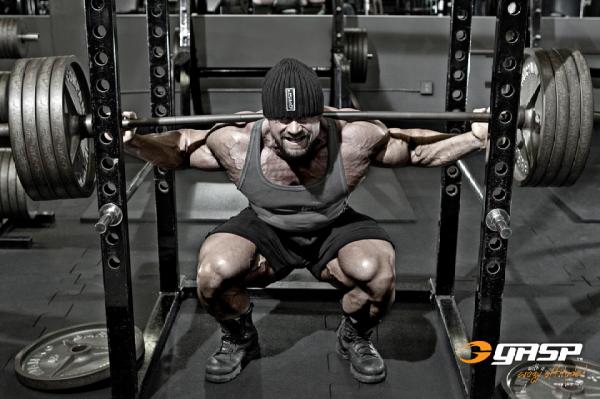
Although straightforward in concept, the squat is far from easy to master from a technical standpoint. To perform it correctly, several major muscle groups must work in physiological synergy, an intricate combination of events ensuring not only safety to joints, tendons and tissues, but also unimpeded effectiveness. The aforementioned prehistoric inhabitant hefting a boulder onto his traps and dropping down into “the hole” without the benefit of proper instruction based on scientific study would soon find his knees ripped to shreds, his lower back busted in two and any chance of fleeing a ravenous T. rex obliterated. Today, luckily, most of us have moved out of our primal underground dwellings (except 1983 NPC USA light-heavyweight champ Benny Podda, but that’s another story). and we can reap the benefit of extensive scientific knowledge.
The squat has been thoroughly researched, dissected and examined to reveal the optimal biomechanical sequence that helps focus stress directly on the targeted muscles.
Join The Club
Ask nine out of 10 bodybuilders how they built their legs, and they’ll say, “Squats.” Along with deadlifts, squats are a rite of passage, separating the best-built bodies in the world from the gym-rat wannabes. If performed all out, they aren’t easy; in fact, plenty of blood, sweat and vomit have been spilled on gym floors as a result of heavy squat days in this and decades past.
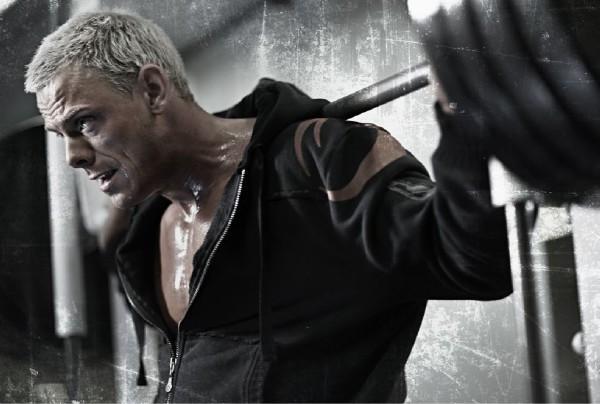
Among the weak-willed, the excuses fly when squats are mentioned bad knees, bad backs, my momma told me not to. A real warrior, however, perseveres, keeping silent as he cinches up his weight belt, steps under the barbell and rolls into strict thighs-parallel-to-the-floor reps. Bottom line: we shouldn’t have to implore you to do squats. Do them. Period. As far as how to incorporate them, trainers have found a multitude of different approaches. Some perform squats first on leg day, warming up and pyramiding up in weight for anywhere from five to 12 sets. Others warm up with leg extensions before hitting the rack. Some masochists do them last, after pummeling their legs with hacks, leg presses, extensions, lunges and curls, just to prove their mettle and to ensure that they walk away with every muscle fiber utterly ravaged.
Now, if you’re ready, learn the time-honored secrets and key components of this essential primeval exercise, plus specific adjustments for your stance, from your heels to your head.
Breathing
When training heavy especially when maxing out don’t inhale during the descent and exhale during the ascent. Take a deep breath before you go down and hold it as you complete the rep. Don’t exhale until you are close to the apex. Filling your lungs with air increases the pressure inside your chest and abdominal cavity, supporting your spine.
Pass The Bar
Proper positioning of the bar can make a world of difference when it comes to squat strength. Placing the bar too high on your traps puts more stress on your lower back and raises your center of gravity, which makes it easy for you to topple. Positioning the bar too low may cause you to bend forward to keep the bar situated on your back. In general, it’s best to place the bar across the middle of your traps.
Taller lifters will typically be more comfortable with the bar down low on their traps, and shorter lifters will usually prefer to keep the bar higher on their traps. Experiment, but whatever you do, keep your shoulder blades pulled together as tightly as possible to keep the bar in place.
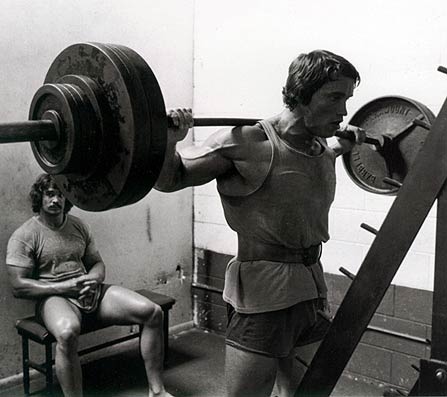
Arch Intact
Keep your back as straight as possible during the squat; avoid leaning too far forward during the descent. Overemphasize the arch in your lower back and maintain it throughout the entire set. Leaning too far forward indicates a weak lower back. Strengthen it by doing deadlifts, Romanian deadlifts and back extensions as part of your overall training program.
Go Parallel
Descend until your thighs are parallel to the floor. Stopping short can detract from full upper-leg development your quads and hamstrings won’t have the necessary power to get you out of the hole when you test your squat strength. Have one extra spotter watch you from the side as you squat to cue you when you hit parallel.
After practicing this for a while, you’ll have a feel for it and you won’t need the assistance.
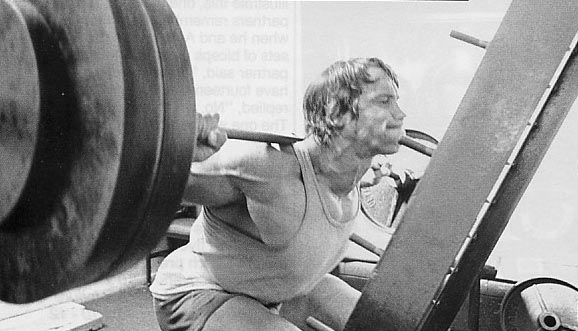
Heels Down
If your heels come off the floor when you’re squatting, you likely have tight calf muscles. Placing a board or weight plates under your heels can help, but you should address the problem in the long run, not cover for it. Work on your calf flexibility on a daily or at least weekly basis.
Get A-Head
Keeping your head in the right position is imperative to a strong squat. Your focus should be directly forward looking up too high can cause you to lose your balance, and dropping your gaze too low may lead you to round your lower back, placing excessive force on your lumbar area.
Lean Back
When you drop down into the squat, keep your butt over your heels. This will help minimize the stress on your knees and afford you more power from the hip muscles. To learn how to push your hips back as you squat, practice the movement on a chair, bench or box.
Take A Stance
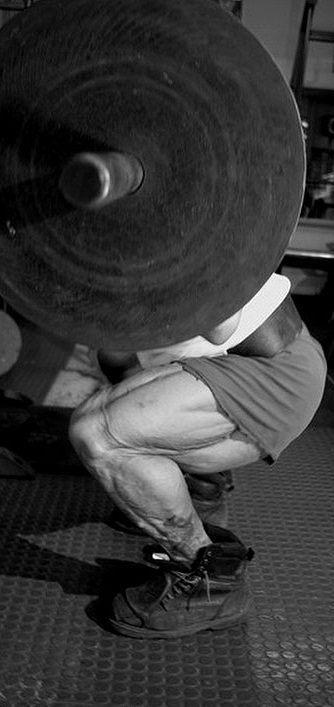 Individual biomechanics come into play, so you must find the foot position that is best for you. If you stand with your feet too close together, your hamstrings and glutes may be unable to properly assist your quads. If your foot position is too wide, your quads will not be able to assist in the movement appropriately. If you have long legs, you might find that a stance far beyond shoulder width is comfortable and advantageous.
Individual biomechanics come into play, so you must find the foot position that is best for you. If you stand with your feet too close together, your hamstrings and glutes may be unable to properly assist your quads. If your foot position is too wide, your quads will not be able to assist in the movement appropriately. If you have long legs, you might find that a stance far beyond shoulder width is comfortable and advantageous.
Those who are average height and whose legs are proportional to their upper-body length will likely be happy with their feet just slightly beyond shoulder width. For those with short wheels, shoulder width or slightly narrower will probably be most ideal.
Push It
As you drive out of the hole, concentrate on moving your hips before your knees. Then, force your knees out hard and push out on the sides of your shoes. This helps maintain tension in your hips for greater power.
Author: Jim Stoppani
COPYRIGHT 2006 Weider Publications
COPYRIGHT 2008 Gale, Cengage Learning










